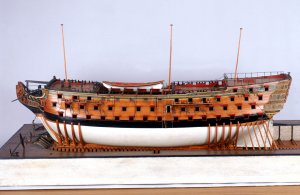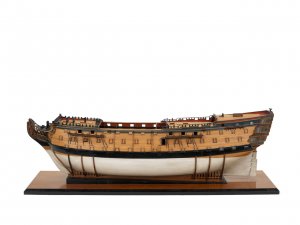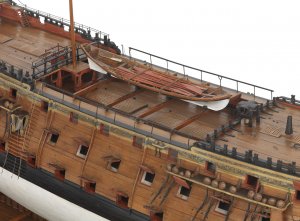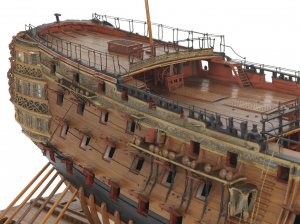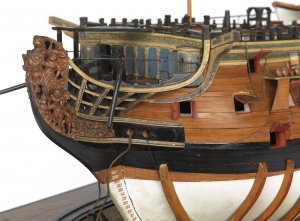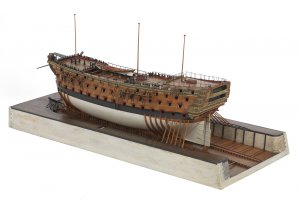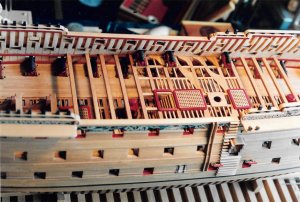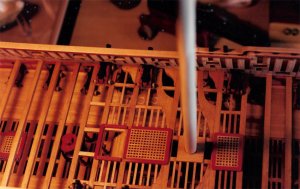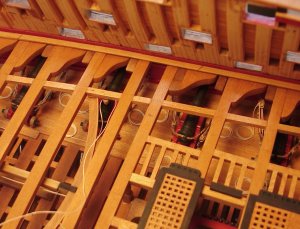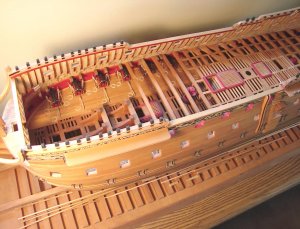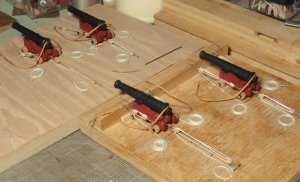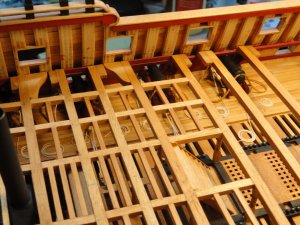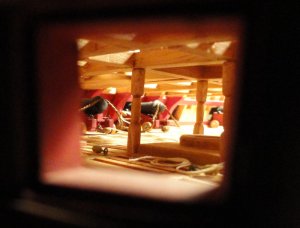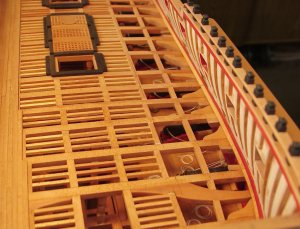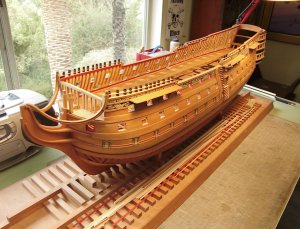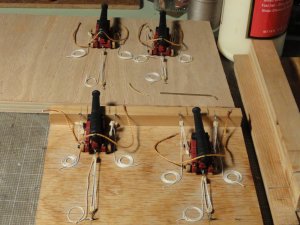- Joined
- Jun 14, 2018
- Messages
- 53
- Points
- 88

Part 1
This will be a "sort of build" log of my scratch-built model of the Victory starting in 1991 to present. In the pre-digital photography era the few photos I have were shot with a Nikon 35mm camera. I'm not the most disciplined when it comes to shooting progress pictures. I get so excited about the build that I think there's just a few more things to do before shooting the next pictures. So here's some shots and explanations of my process from the early '90's.
After the usual research and gathering of plans and photos I decided to build in 1:64 scale, or 3/16th"=1'. A good average house scale. My base plans were taken from John McKay's book "The 100-gun Ship, Victory", the Anatomy of the Ship series published by Conway Maritime Press Ltd. The plans are based on how she would've looked after her 1800-1803 large rebuild prior the Trafalger. My original intention was to build this version. After the start of the framing I noticed the original sheer line and rails, still visible today, before the build-up of the bulwarks along the quarterdeck. So back to research for drawings of how Victory looked from 1765+ with stern galleries and such. Meanwhile the build still went on for the hull structure.
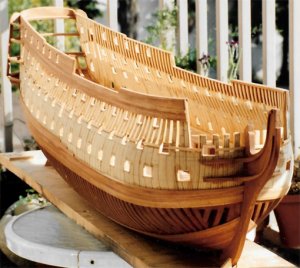
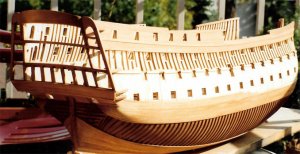
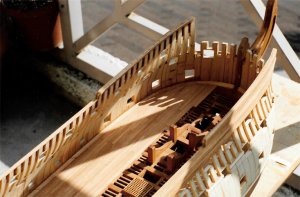
The first step was to enlarge the drawings to 1:64 scale. I enlarged the outboard, inboard, framing, profiles and plan views of the ship then all the frame sections. The keel, stem and stern post drawings as well.
Framing and Shaping the Hull
I used what is probably a unconventional approach to construction of the hull. Since the "Man of War" has more frames than a merchant vessel, and they almost touch each other, I figured that 1/4' thick frames would be very close for an Admiralty style builders model. All the frame sections were laid out on 1/4" thick birch marine ply and cut on a band saw. I cut 1/4" spacer sections for between the actual frames. These were carefully aligned and screwed together in stacked sections until I had the complete hull. (No photos exist of this phase). I used a 1" Makita belt sander to knock down the stair step frame sides close enough to start block sanding by hand. I forgot to mention you must make sure your frame drawings, before cutting, start amidships facing towards the bow and aft towards the stern post. That way when the shaping starts you are sanding to the line of the drawings for the proper shape. It's like making a pattern or wood buck for a mold.
After the hull is shaped and sanded to a finer grit, the next step is to unscrew all the frames and take out the 1/4" spacers. Back to the band saw and cutout all the insides of the frames and notch for the keel indexing.
The Keel, Stem and Stern Post
Next was cutting out and assembly of the keel, etc. From here it conventional construction with the keel laid upright and plumb on the building board, and frames set in position. I cut frame shaped sections out of the spacers and placed these between the frames at the middle and lower gun deck levels for strength and rigidity. Once everything is glued in position with stringers holding the outside into place, I sanded and shaped the inside of the frames.
The Planking
All the planking is Basswood used for its very fine grain. For the bow and stern areas I used my wife's tea kettle to steam the planks for the tighter radius bends.
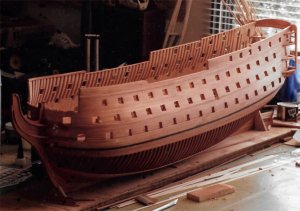
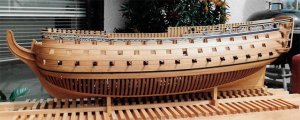

Above is the completed planked hull, the cutting down of the bulwarks, The addition of the wales and moldings, upper rails. I made tooling jigs for shaping the moldings. Lower deck 32 pounders are sitting in place. Cannon construction is another project in itself. And of course one must take the motivational paint break to see how things will look.
This will be a "sort of build" log of my scratch-built model of the Victory starting in 1991 to present. In the pre-digital photography era the few photos I have were shot with a Nikon 35mm camera. I'm not the most disciplined when it comes to shooting progress pictures. I get so excited about the build that I think there's just a few more things to do before shooting the next pictures. So here's some shots and explanations of my process from the early '90's.
After the usual research and gathering of plans and photos I decided to build in 1:64 scale, or 3/16th"=1'. A good average house scale. My base plans were taken from John McKay's book "The 100-gun Ship, Victory", the Anatomy of the Ship series published by Conway Maritime Press Ltd. The plans are based on how she would've looked after her 1800-1803 large rebuild prior the Trafalger. My original intention was to build this version. After the start of the framing I noticed the original sheer line and rails, still visible today, before the build-up of the bulwarks along the quarterdeck. So back to research for drawings of how Victory looked from 1765+ with stern galleries and such. Meanwhile the build still went on for the hull structure.



The first step was to enlarge the drawings to 1:64 scale. I enlarged the outboard, inboard, framing, profiles and plan views of the ship then all the frame sections. The keel, stem and stern post drawings as well.
Framing and Shaping the Hull
I used what is probably a unconventional approach to construction of the hull. Since the "Man of War" has more frames than a merchant vessel, and they almost touch each other, I figured that 1/4' thick frames would be very close for an Admiralty style builders model. All the frame sections were laid out on 1/4" thick birch marine ply and cut on a band saw. I cut 1/4" spacer sections for between the actual frames. These were carefully aligned and screwed together in stacked sections until I had the complete hull. (No photos exist of this phase). I used a 1" Makita belt sander to knock down the stair step frame sides close enough to start block sanding by hand. I forgot to mention you must make sure your frame drawings, before cutting, start amidships facing towards the bow and aft towards the stern post. That way when the shaping starts you are sanding to the line of the drawings for the proper shape. It's like making a pattern or wood buck for a mold.
After the hull is shaped and sanded to a finer grit, the next step is to unscrew all the frames and take out the 1/4" spacers. Back to the band saw and cutout all the insides of the frames and notch for the keel indexing.
The Keel, Stem and Stern Post
Next was cutting out and assembly of the keel, etc. From here it conventional construction with the keel laid upright and plumb on the building board, and frames set in position. I cut frame shaped sections out of the spacers and placed these between the frames at the middle and lower gun deck levels for strength and rigidity. Once everything is glued in position with stringers holding the outside into place, I sanded and shaped the inside of the frames.
The Planking
All the planking is Basswood used for its very fine grain. For the bow and stern areas I used my wife's tea kettle to steam the planks for the tighter radius bends.



Above is the completed planked hull, the cutting down of the bulwarks, The addition of the wales and moldings, upper rails. I made tooling jigs for shaping the moldings. Lower deck 32 pounders are sitting in place. Cannon construction is another project in itself. And of course one must take the motivational paint break to see how things will look.
Last edited:





